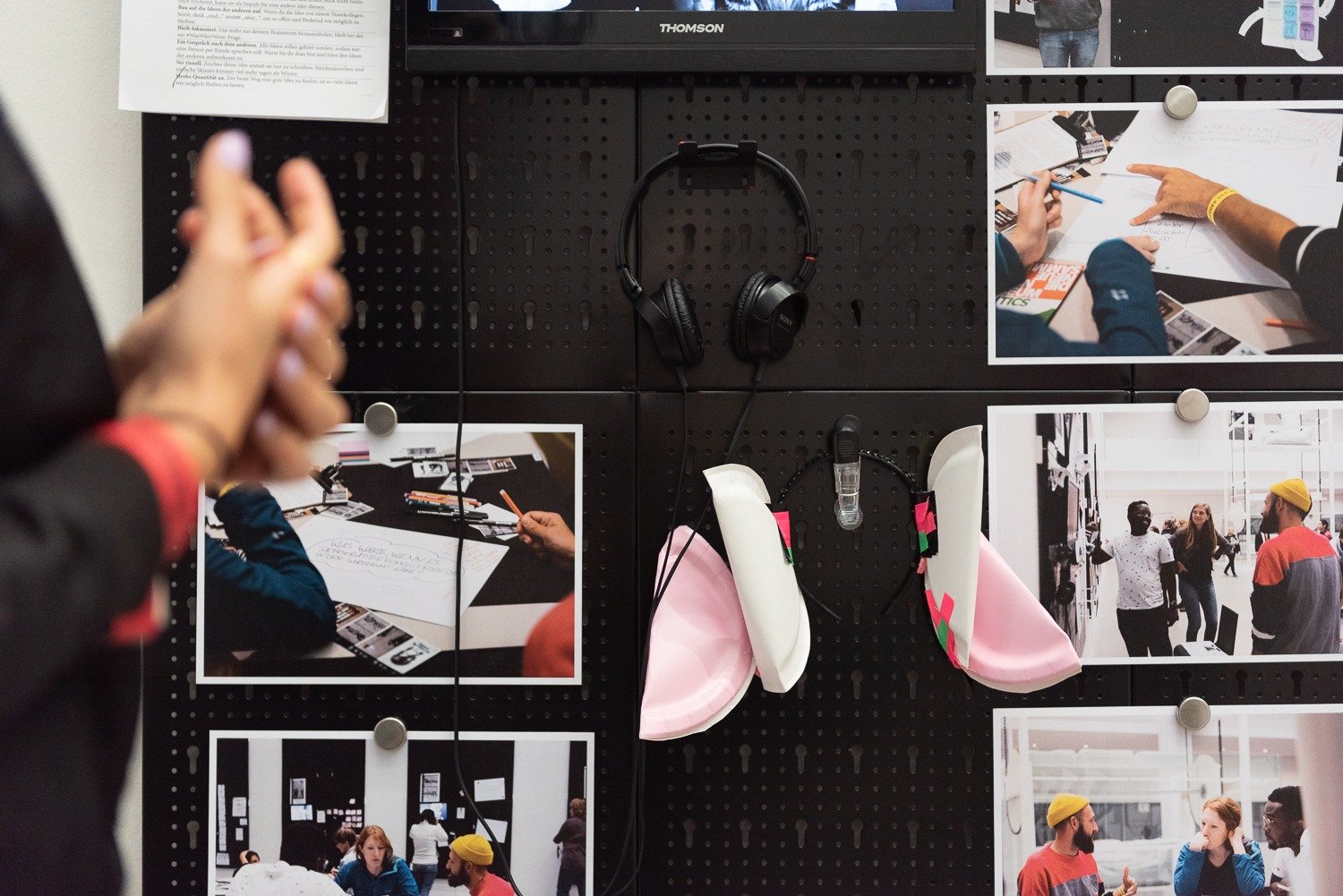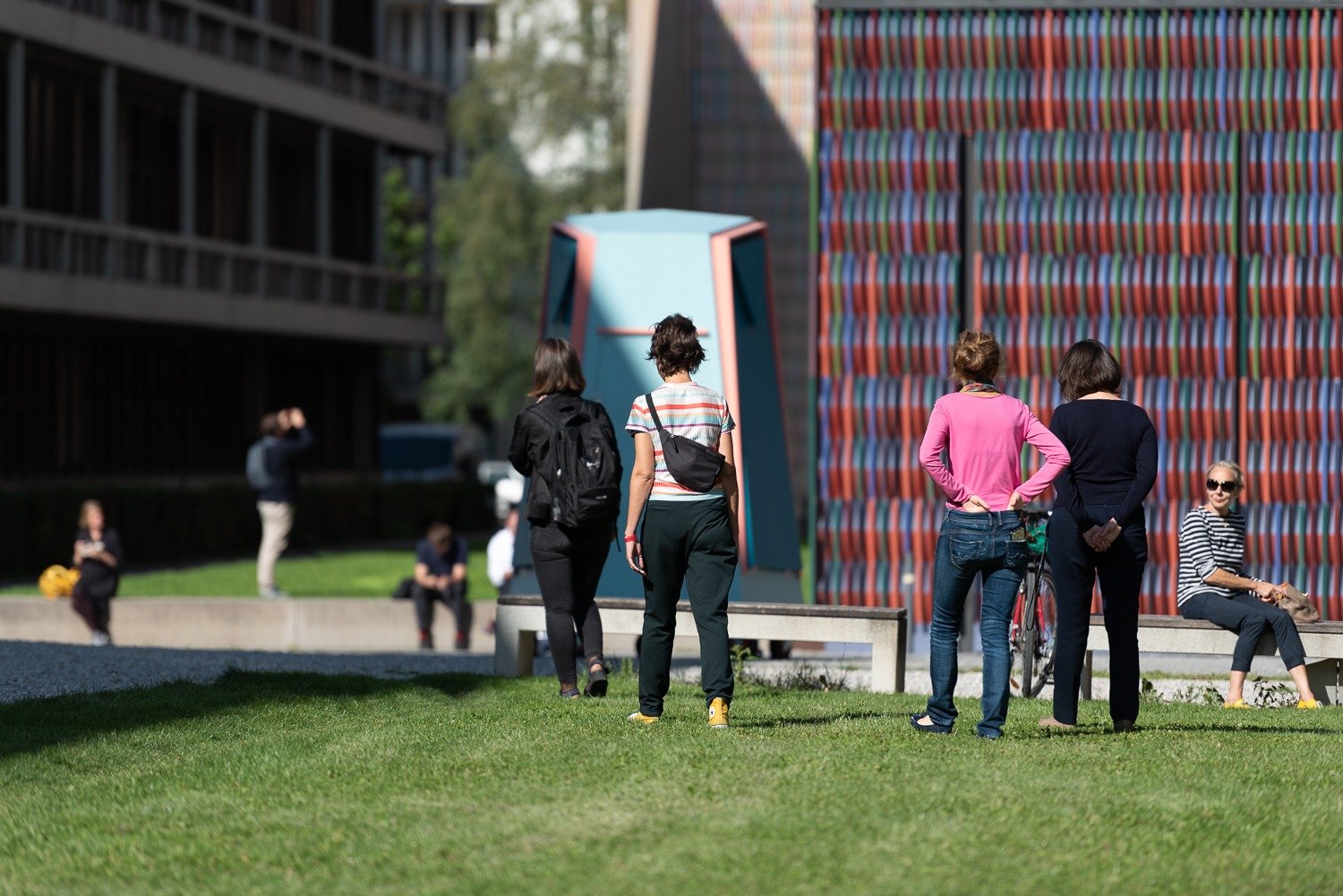Blocking The Sound
Banu Çiçek Tülü treats the urban space as a site of collective intervention through soundwalks
Drawing by Banu Çiçek Tülü
Urban walking, which appears such an easy, everyday act, can be difficult, challenging, uncomfortable and even impossible for members of some communities. It is a privileged act—the act of the white male bourgeois flaneur. Less privileged walkers are frequently confronted by sonic violence: sniping comments, swearing, verbal harassment, aggressive beeps from car horns, the noise of deliberately revved car engines.
Headphones are a common means of aural self-protection in the city. You can still hear, but you can at least pretend that you’ve heard nothing. Even if you are fearful or angry, you walk away. Full of fear, your heart beats furiously, but the headphones offer a form of protection.
Sound and hearing is personal and subjective, but soundwalking can teach us attentive listening: the kind of deep, reflective listening encouraged by experimental composer Pauline Olivieros. It can create awareness, help us understand different perspectives, and enhance our political imagination. Thus, soundwalks are challenging: they ask us to think about the politics of sound.
Blocking the sound is a series of workshops and soundwalks designed to call attention to sonic violence. The project reconsiders sidewalks and walking as a privileged act. During the workshops, participants are invited to create headphones using recycled materials. These objects/headphones have a potential future application in group soundwalks. I invite participants to think about the sidewalk as a metaphor for the infrastructure of power relations.
INTERLUDE - NOTES ON INFRASTRUCTURE
As far as I know, the word Infrastruktur never appears in the writings of Karl Marx. In popular usage, infrastructure tends to connote physical systems and structures, especially those that facilitate transportation, communication, and the provision of services, but its resonance with the Marxist category of Basis is instructive. Just as the economic base of society is comprised of material relationships – wage relations, property relations, class relations – as much as it is of material objects, contemporary infrastructure studies take for granted that the “peculiar ontology” of infrastructures “lies in the fact that they are things and also the relation between things” (Larkin 2003).A defining characteristic of infrastructure, suggested by its status as constant capital, is a temporal orientation towards repetition, continuity and duration. Infrastructure is what is expected. It is a memory made of concrete. In satisfying expectations, infrastructure recedes into the invisibility of routine. This is true even in settings where a lack of certain kinds of infrastructure has, itself, become infrastructural (Simone 2004). In this sense, infrastructure reifies, transforming the social relations it embodies into things that appear to be just there, beyond the social and outside history.
Infrastructure remains irreducibly political, because it distributes and concentrates resources and advantage, enables and disables mobility (including migration), organizes spatial and temporal relations, and manifests inequality and power. Under conditions variously named globalization, neoliberalism, and the network society, infrastructure is the medium by which capital becomes the state, and by which the state accomplishes itself as an organizer of flows and bases of identity (Easterling 2014).
SONIC ACTIVATION
Sonic Activation / Sonic Map Exercise. Map by the participants, 2021
The soundwalk I conceived of and conducted focused on listening. Participants are invited to explore the sounds and their social and cultural context. At the same time, the participants focus on their aural history and possibly change their perception of sound in everyday life.
The prompt is: “We will walk and listen to our environment very carefully. We will listen to any sound; near and far from us, continuous and discontinuous, in the foreground and in the background, sounds that we like and noises that we don’t like.“
I consider soundwalks as a transdisciplinary research tool in urban space. Working with sound requires understanding the emotional and behavioral experiences of the space. In this kind of artistic research sound creates possibilities to perceive our surroundings through senses. From an audible perspective, the qualities of things beyond the dimension of the visible can be observed. The body is the tool that helps to understand the environment; the act of participation in a soundwalk can be seen as examples of collective sensory aural training.
Is it possible to understand our environment while eyes closed? Could sound guide us through space? Could we use all our body to hear? Sonic Activation is an interactive performance where all participants walk, move and discover the space (inside/outside) together. The audible perspective is underestimated as we are living in an overly-visual world. During Sonic Activation, the participants are given some exercises for collective sensory aural training. The aim is to recall our aural history, focus on our hearing and listening abilities and possibly change our perception of sound in everyday life.
Act Sonic Activation. Image by Victoria Tamaschko
The urban area where the performance took place - highly commercialized street - triggered me about how capitalism truly affects women, their appearances and psychology. Women are in constant exposure about how to look, behave and exist. Women are in constant alarm to defend themselves. In this context, I want to collaborate with feminist writing of Sara Ahmed as an empowerment tool. In her book Living a Feminist Life, Ahmed presents the idea of the feminist killjoy and highlights the strategies to survive as a feminist and person of color in any environment; work, family, friendship, etc. while giving personal experiences about racism and sexism. As a person of color and migrant woman, I created a narration which found a voice in three different tracks with field recordings. I used bluetooth speakers to share this feminist killjoy epilogue and to activate the urban space. With the idea of the chinese whisper game, the audience were invited to listen and reflect on the maps it has been provided. While we slowly changed the stations in the selected area, the audience were getting close to the speakers to understand heavily produced tracks or being away to reflect their own experiences. At the end of the performance, I converged individual sonic mind maps and layered them all together to represent a feminist sonography, anchored in a methodology of listening as a collective act.
Sonic Activation / Sonic Map Exercise. Map by the participants, 2021
Sonic Activation / Sonic Map Exercise. Map by the participants, 2021
Sonic Activation / Sonic Map Exercise. Collage of the participants’ maps, 2021
Sonic Activation/ Bluetooth Speakers for the Performance in Public Space, 2021. Image by Victoria Tamaschko
Sonic Activation/ Participants Listening and creating Sonic Mind Maps, 2021. Image by Victoria Tamaschko
Sonic Activation/ Bluetooth Speakers for the Performance in Public Space, 2021. Image by Victoria Tamaschko
Image by Banu Çiçek Tülü, 2019
Image by Banu Çiçek Tülü, 2019
Image by Banu Çiçek Tülü, 2019
Image by Banu Çiçek Tülü, 2019
Proposal for public space, 2019
Blocking the Sound Workshop/ Design Museum Munich, 2019. Image by Elif Simge Fettahoglu
Blocking the Sound Workshop/ Design Museum Munich, 2019. Image by Elif Simge Fettahoglu

















